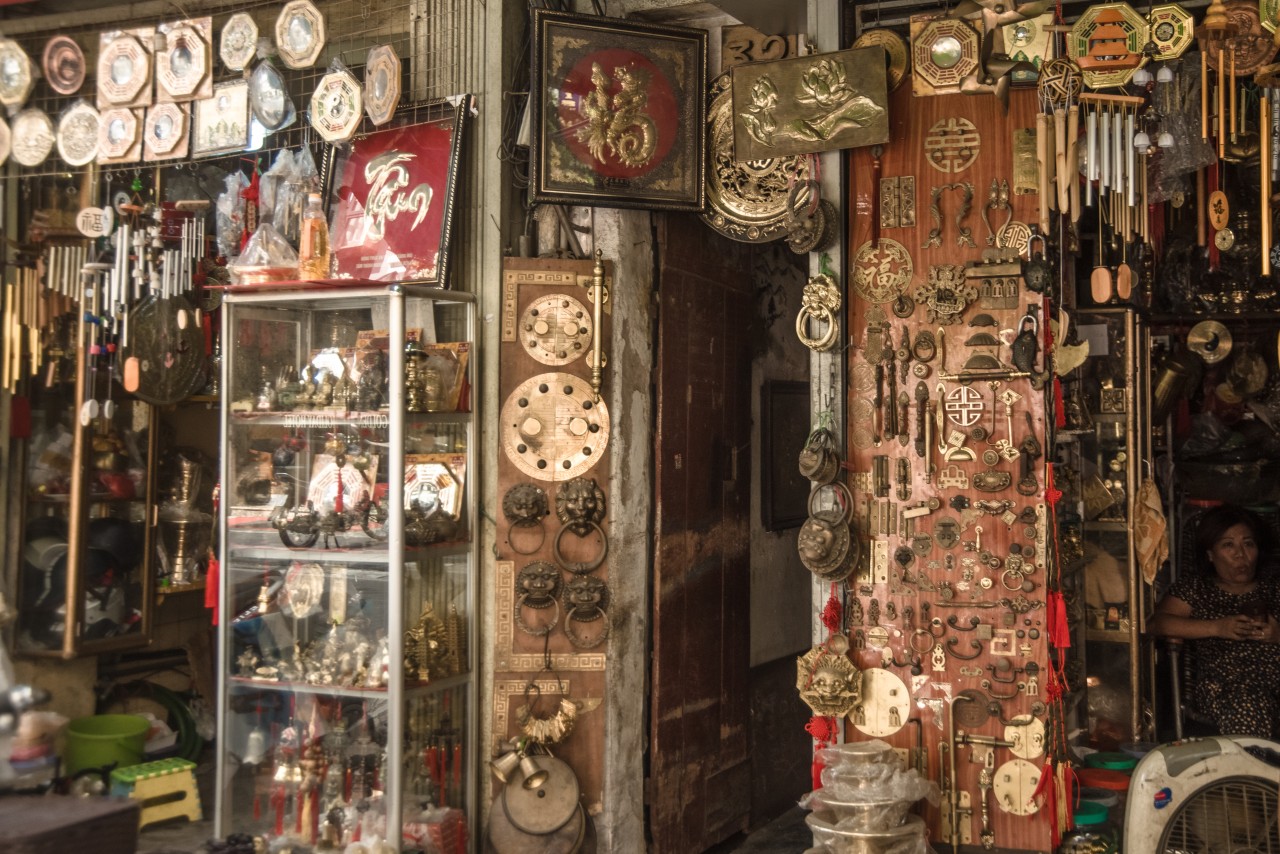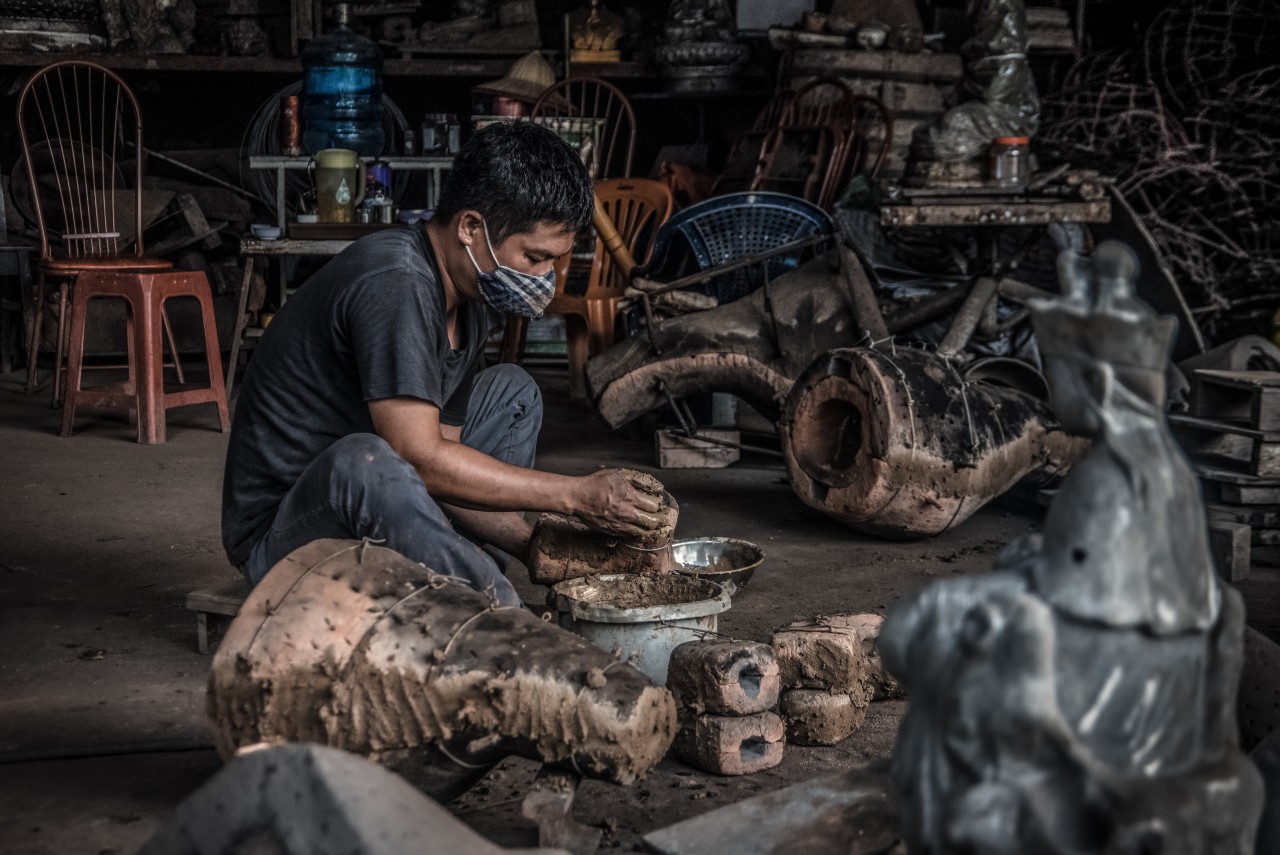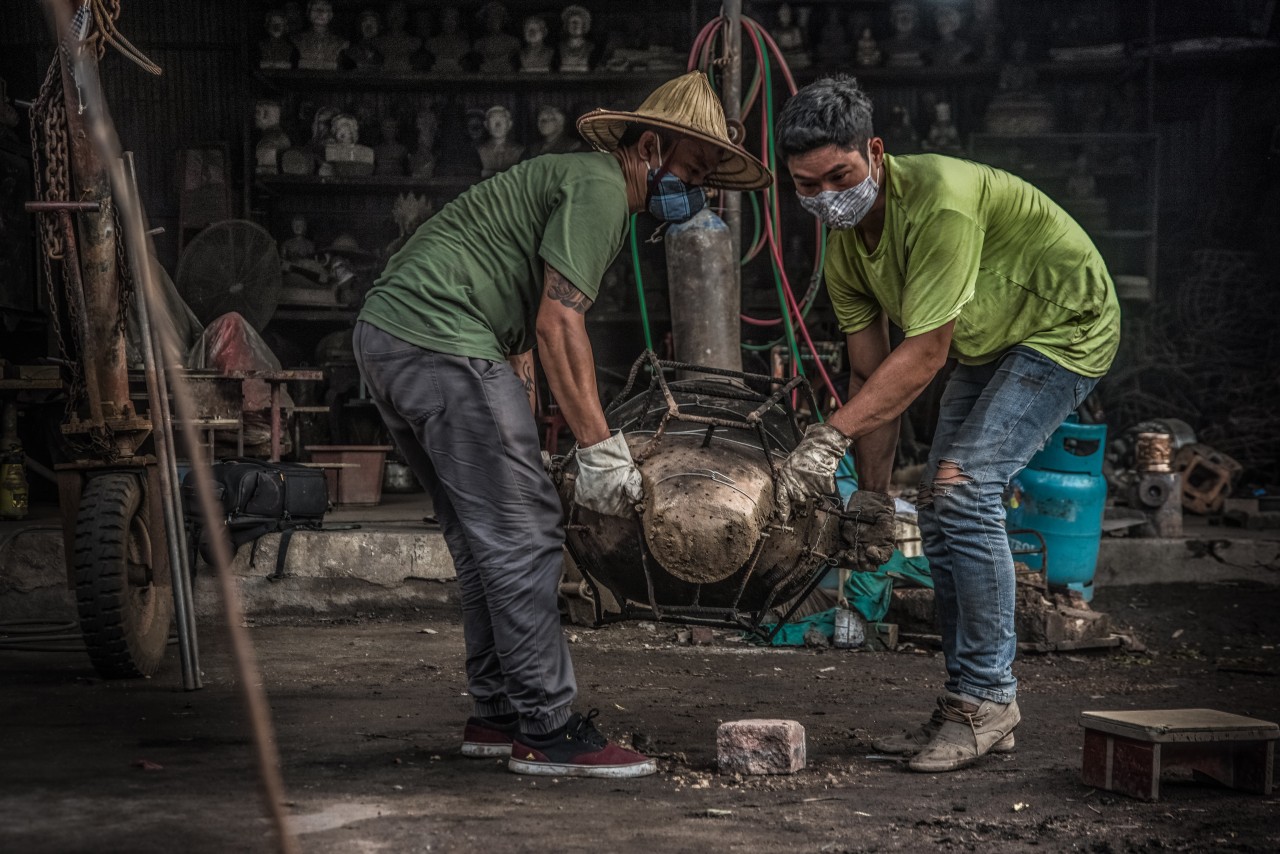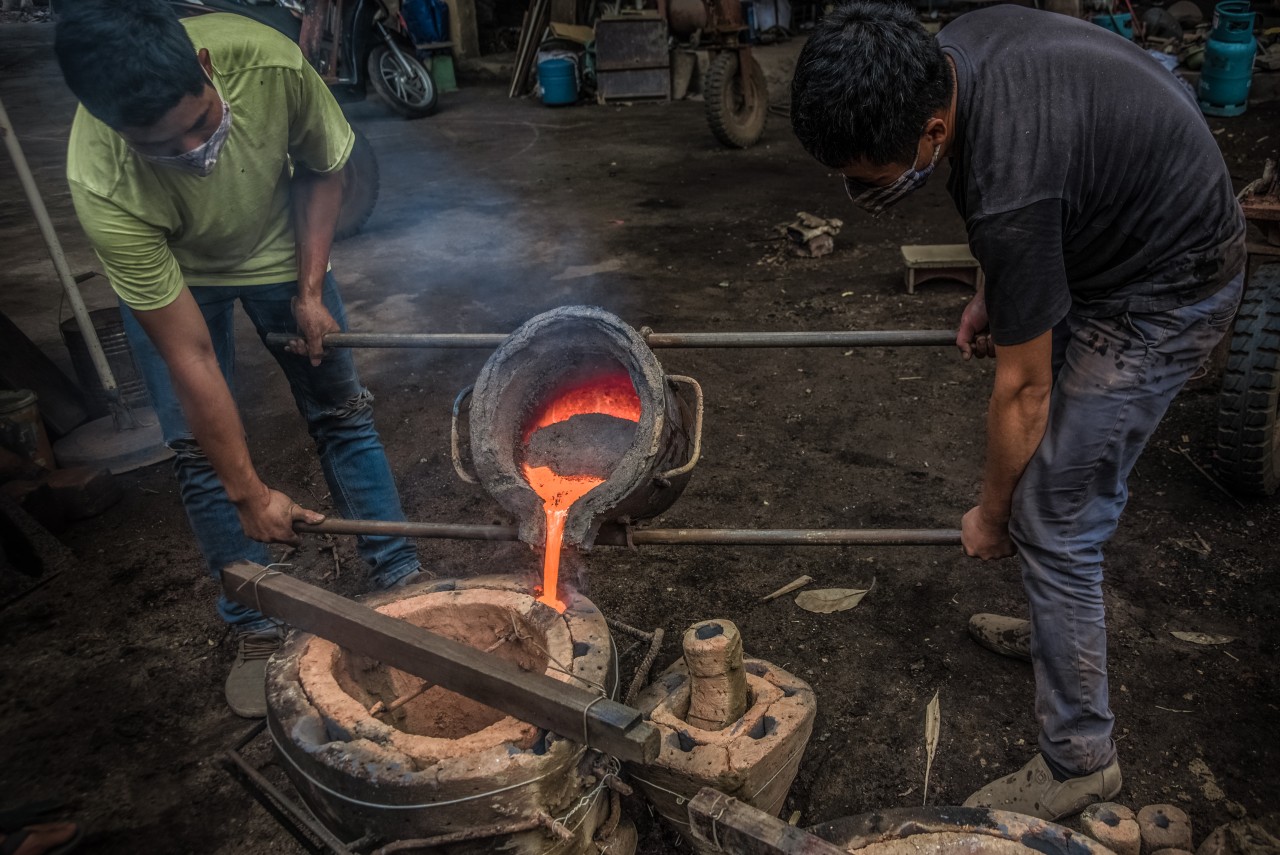Ngu Xa Village, located west of the former Thang Long capital (present-day Hanoi) has practiced the craft of copper casting for more than four centuries. Though the village has experienced ups and downs, the local artisans have preserved this traditional craft with wholehearted devotion.
By Architect Nguyen Phu Duc
According to written books from the Le Dynasty (1428-1527), the bronze founders in the five communes of Dong Mai, Chau My, Luong Thuong, Ta Vien and Dien Tien from Sieu Loai district (now Thuan Thanh – Bac Ninh province and Van Lam – Hung Yen province) had come together to set up Ngu Xa village to produce bronze products such as pots, peaks, bells, statues and worship. During the French occupation (1873-1954), the village was in the inner city area of Hanoi with about 80 families from 4 family lines of Nguyen, Leu, Do and Tran.
In the early days, Ngu Xa had more than 20 foundries, of which each was a large house with a copper oven consisting of two floors: first was for cooking copper and second was for baking molds. The workers of each workshop were from the same extended family, village or apprentice.
Bronze casting is mainly for men, while women bought the raw materials. Finished items were delivered by women, trainees or young children for grinding and polishing, and then sold at stores on Hang Dong Street, where funds for the Ngu Xa families were collected to buy materials to produce more products.
As the copper industry quickly developed, the village was organized into a separate ward, known as the bronze casting district of Ngu Xa. It gradually became one of the four elite quintessential businesses in the Thang Long capital. Typical products are turtles, candles, candlesticks, brass baskets, as well as bronze statues and bronze altarpieces presented in many communal houses and pagodas in Vietnam. Some of the most famous items were the Amitabha Buddha statue at Than Quang Pagoda (in Ngu Xa village), Tran Vu statue at Quan Thanh temple and the One Pillar Pagoda bell.
Bronze casting workers are skillful craftsmen and the masters must know well all the techniques of the process: Shaping – Casting – Cooling and Polishing. Each mold would be worked through multiple tasks, though each was used for just one product. Therefore, the workers who follow the profession require patience, enthusiasm and talent.
Up to now, the Ngu Xa casting industry is still largely run through two high-skilled artisan families, one is the workshop of veteran Nguyen Van Ung and the other is the workshop of Mrs. Ngo Thi Dan. The convention of the village is not to spread the work out, but the good news is that the later generations of the two families are very passionate to follow their ancestors.
In the period of integration with innovative thinking, Ngu Xa village artisans have updated and created many new suitable designs, attracting foreigners who have come here to learn and cooperate in production. Coming to the Ngu Xa peninsula today, on poetic Truc Bach Lake also has a “pho cuon” that attracts visitors.


























